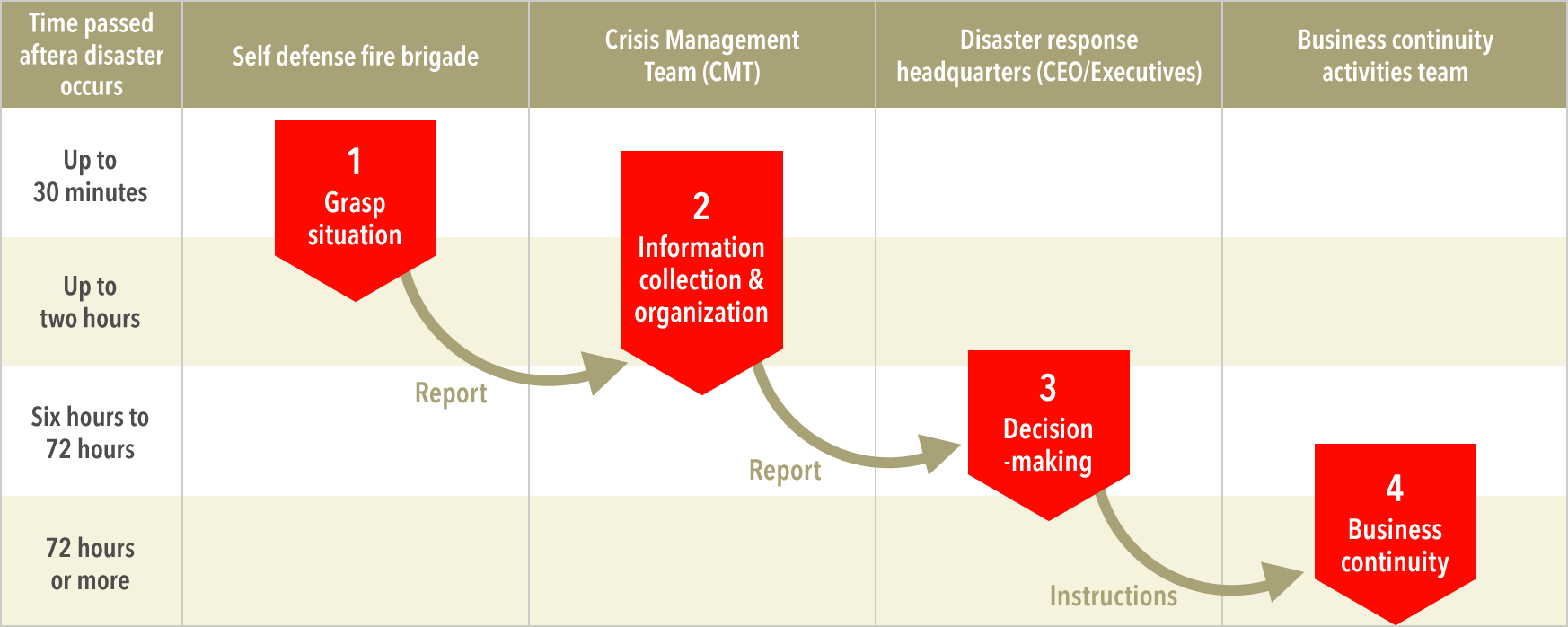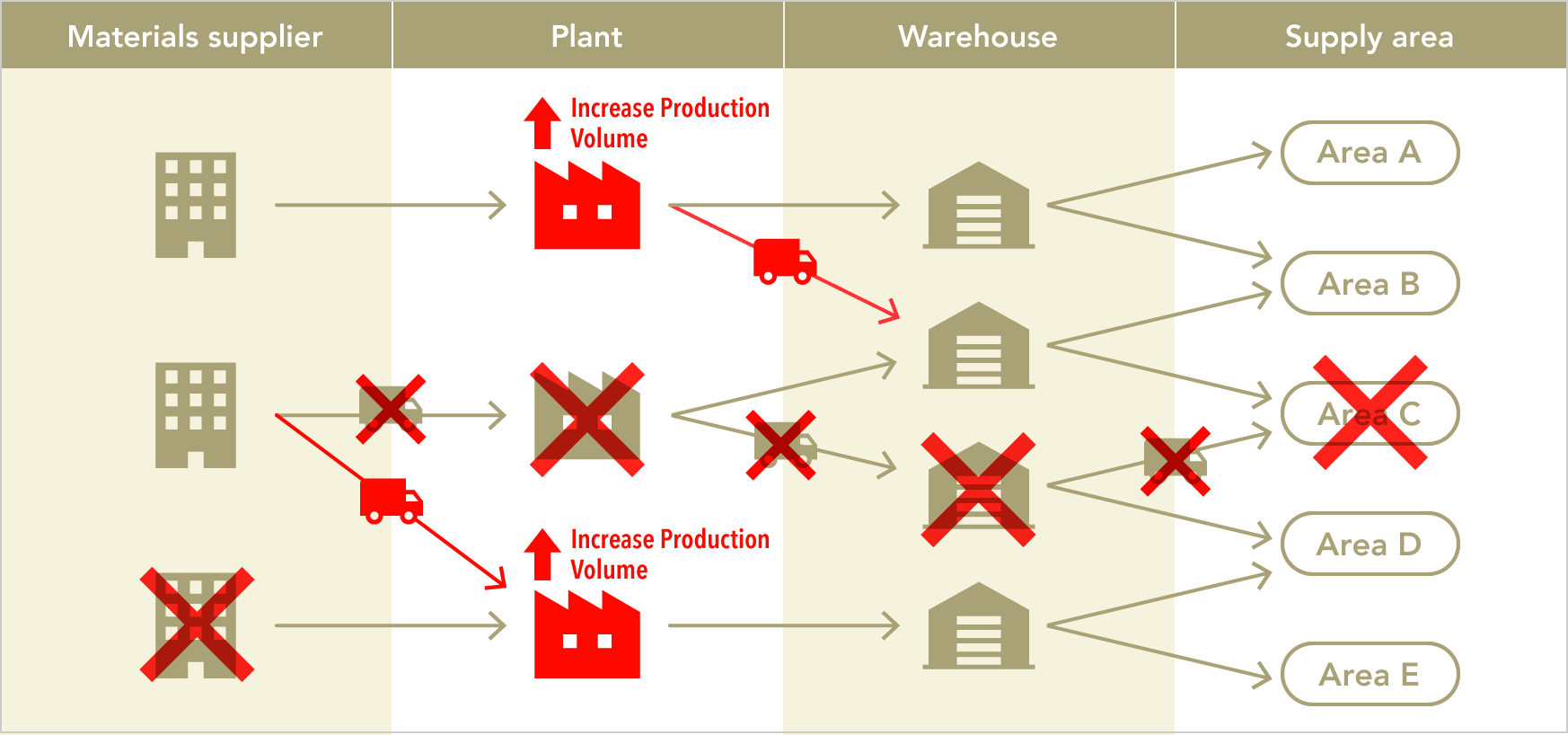Business Continuity System during Disasters
The NISSIN FOODS Group established a Business Continuity Plan
(BCP) to ensure the continuance of business activities to sustain
a stable product supply, making it possible to provide food aid to
consumers during emergencies, including natural disasters such as
large earthquakes and floods.
The following procedures are carried out to continue business activities
in the event of an actual disaster.

1. Self-defense Fire Brigade Takes Stock of the Situation

A self-defense fire brigade that handles actions including initial fire extinguishing activities and first-aid fire-fighting activities is set up at each site to minimize damage during disasters. When a disaster occurs, the self-defense fire brigade confirms whether there are injuries and damage, including damage to structures and facilities and reports the situation to the Crisis Management Team.
2. The Crisis Management Team Gathers and Organizes Information

The Crisis Management Team (CMT) is an organization composed
to organize information gathered from the self-defense fire
brigade and from external related parties, including suppliers
and affiliates. The CMT prepares several action plans in the
case of a disaster, including large earthquakes, even in
ordinary times.
When a disaster occurs, the CMT quickly creates a disaster forecast
based on a variety of information and picks up issues that will
obstruct business continuity. Following this, the team chooses
the most effective action plan(s) from a number of previously formulated
plans, and reports on the action plan(s), with necessary revisions,
to the disaster response headquarters.
3. Decision-making by Disaster Response Headquarters
The Disaster Response Headquarters is made up of executives. They carry out decision-making necessary for business continuity based on reports from the CMT and provide instructions to each site in charge of the supply chain.
4. Execution of Operations at Each Site
In accordance with decisions made by the Disaster Response
Headquarters, operations will be carried out at each site in
charge of the supply chain, so as not to disrupt product supply.
Even if the warehouses of raw material and other suppliers, and our
proprietary manufacturing plants are struck by disaster, we aim to
maintain product supply levels that are on a par with the volume during
normal times, by alternatively using warehouses belonging to raw material
and other suppliers in other regions, and increasing production volume
at manufacturing plants that are not devastated by disasters.
